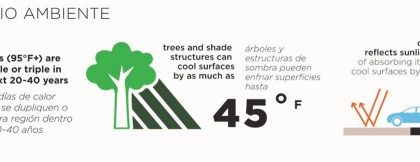Time zones and an International Date Line may separate Association of Southeast Asian Nations (ASEAN) cities with those in North America, but we’re all looking for ways to minimize our impact on the environment, improve public health, and ease traffic congestion.
Active mobility is the most efficient way to move people in cities for short trips like shopping, getting to school, and commuting to work, but the built environment in many cities throughout ASEAN is not suitable for safe, convenient, and low-stress active mobility options.
Fortunately, many of these challenges can be overcome with low-cost, high-impact strategies that have already been implemented in North America.
Curious how this could work in your community? The following set of projects shows how we have done this in North America.
North Dakota Active Transportation Pop-up Demonstration Projects



Alta’s team works on an active transportation pop-up demonstration project in North Dakota.
In an effort to increase safety for people who walk and bike in North Dakota, Alta planned, designed, and implemented nine active transportation pop-up demonstration projects throughout the state. The temporary installations are part of ND Moves: North Dakota Active Transportation and Transit Plan. The communities ranged in size and population, and the team worked with partners from each town or city, the North Dakota Department of Transportation (NDDOT), and Kimley-Horn and Associates to develop designs, select materials, and gather volunteer support for the temporary installations.
Alta facilitated a workshop and site visit to kick off each community’s planning process. The meetings gathered many people including public health officials, public works employees, city council members, mayors, police officers, and fire department representatives. Alta planners and engineers left each workshop with unique solutions to meet community goals.
Following installation, each temporary project was evaluated to understand changes in street use and speeds. Whether communities wanted to understand driver behavior, speed data, or pedestrian and bicycle use, Alta created a framework for collecting data and summarized the results.
“Working with communities, particularly smaller ones, was very empowering. Residents saw how their community could be nimble and quickly make changes,” said Kristen O’Toole, Alta Senior Planner in Minneapolis. “Even residents who disagreed with a project’s design appreciated the chance to voice their opinion and be heard.”
Memphis, TN Medical Center Streetscapes



Above: The Memphis Medical District Collaborative enlisted the talent of local artists, Cat and Nick Peña, in the second phase of the interim design streetscape enhancement project on Manassas Street in the Memphis Medical District, which covers nearly 2,600 square feet of roadway. Local artists Anthony Lee and Kaleob Elkins partnered with Cat Peña on installation. The artistic installation is bordered by two crosswalks and aids in the traffic calming at this highly-used mid-block crossing.
Alta worked with the City of Memphis and the Memphis Medical District Collaborative to rebalance existing street space for pedestrians and bicyclists in the city’s redeveloping Medical District. Adjacent to downtown Memphis, the Medical District is becoming a mixed-use area aimed to accommodate apartments, offices, classrooms, and hospitals. Multi-modal streets were needed in order to make the area livable and walkable, and tactical urbanism was a cheaper and quicker way to dramatically increase safety, usability, and aesthetics of the area.
The project began with conceptual planning of over 40 intersections, and subsequent phases included striping, on-street epoxy gravel bump-out areas, landscaped planters, and site furnishings. The ultimate goal of the project was to increase safety and decrease traffic stress for pedestrians and bicyclists in the Memphis Medical District, which included reducing confusion in complex intersections. Phase 2 of the project (Manassas Street) was recently named one of the Top Ten Bikeways of 2018 by People for Bikes.
Southern California SCAG Tactical Urbanism Events



Source: SCAG Go Human SoCal
Alta worked with the Southern California Association of Governments (SCAG) to develop and implement the tactical urbanism component of “Go Human,” a region-wide safety and encouragement campaign. The project aimed to increase walking and biking across the region by hosting a series of 10 events that allowed residents to temporarily experience roadways designed for people and not just cars.
A critical component of the project was building cross-jurisdictional relationships and community partnerships to support and implement future infrastructure. To accomplish this, Alta organized community advisory committees and provided multilingual marketing assistance for each city to promote active transportation and ensure events were widely attended.
“A lot of the work we do is long-term planning, but with tactical urbanism projects like this, city staff actually get to see what separated bikes lanes and pedestrian crossings might look like,” said Ryan Johnson, Alta planning associate in Los Angeles. “Community members get to test these projects and give their input in real-time.”
Participants filled out surveys at each event, which measured perceptions of infrastructure safety and support for future investment. Alta worked with each host city to tailor surveys to make sure desired data was captured for future support and grant applications.
If you are interested in learning more about implementing low-cost, high-impact strategies to improve active mobility safety in your community, contact us.
In the meantime, follow Alta’s updates on Twitter or check out another recent blog featuring active transportation experiences in SE Asia!


